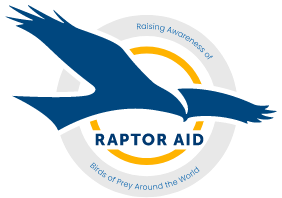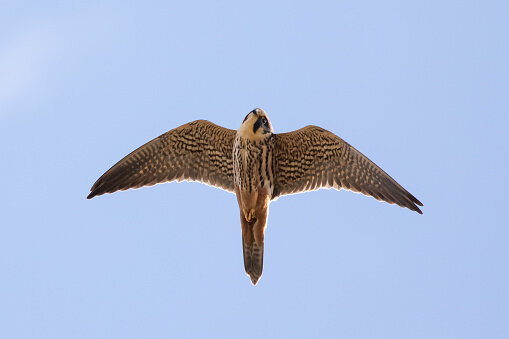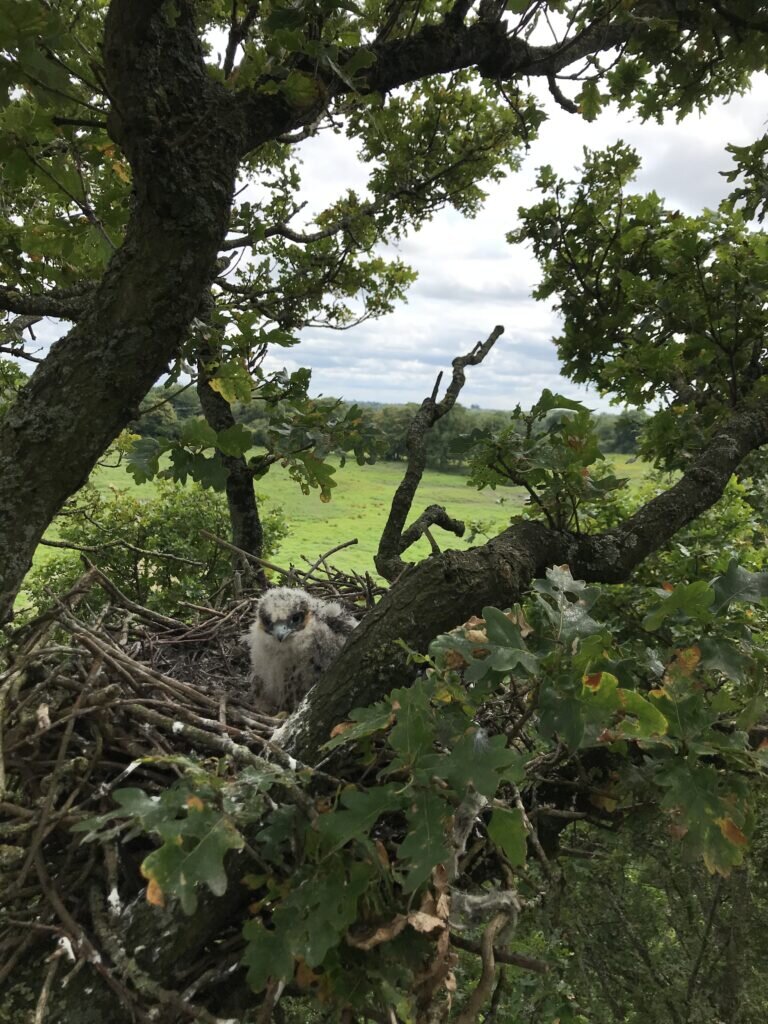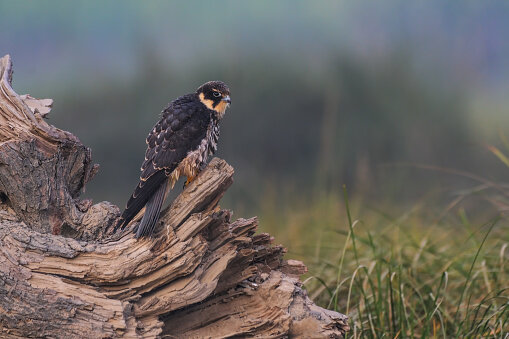Chasing a true love......
We all have our favourite things right? Pizza, wine, TV shows or a place to visit. When you have a passion in life its all consuming, and for me its really what life is about, its the very fabric that makes humans do awesome things. Obviously my passion is birds of prey and everything that comes with them, their conservation, educating people about them and learning as much as physically and mentally possible. When it comes to birds of prey there is always that one (or two or three....) species that get under your skin, allow me to indulge you in a species that is top of the pops for me!
The Eurasian Hobby (Falco subbuteo) is a summer migrant to Britain usually arriving on our shores from mainland Europe and Africa around May and staying until October. What they get up to in between May and October is what really gets me excited and intrigued! Why the Hobby though? Well this falcon is not only stunningly attractive but its a sight to behold in the sky especially hunting. One of the best times to see Hobbies in the UK is when they arrive back and head to bodies of water to hunt often in good numbers, the key is the bodies of water which attract numbers of Hobbies to hawk or hunt insects that are also attracted or have hatched out from around or in the water. Insects make up a large part of this species diet in the early part of the breeding season, I've had some amazing views of this species catching insects on the wing. The sight of a Hobby catching cockchafers, passing the insect to its beak mid flight to detach wings and consume before flitting off to catch another on a warm summers evening is an avian masterclass. Stick it in your bird watching diary for 2021!
Eurasian Hobby in adult plumage
Probably what also makes this species so appealing to me is monitoring there breeding attempts in my local area. Hobbies are incredibly under recorded in the UK but that is kind of understandable because they are often incredibly secretive and elusive when in breeding mode and in the immediate vicinity of their nest site and territory. Now, there may be some people reading this who have found Hobby nest's and are thinking, rubbish, I found the nest really easily, I just bumped into an agitated adult hobby beating up another bird in its nest tree or I see the young sat on a branch when they fledge every year. We can all stumble upon a species or nest site but my challenge to anyone is to start cold and find a breeding pair of Hobbies and then you will understand the trials, frustrations and full on excitement when the many hours of field work pay off.
I should just take this moment to point out that in Britain the Hobby is afforded the highest protection as a breeding bird as a Schedule 1 species and as such requires a licence to disturb whilst nesting, including dependent young. The majority of raptor monitoring can however been done from afar and often that gives you the most clues and best views for many species.
Timing is everything because as mentioned once a nest site has been chosen the real trickery begins. In my part of the world Hobbies usually take up old crows nest's often in field oaks in prime farmland not to far from several food sources which might be good House Martin and Swallow colonies on the neighboring farms or the river which runs through the county. As a farmers son I think back to all the farms I used to ramble around with my father and the amazing sight of hundreds of Swallows and House Martins above the farm yard, nesting on the farm house or within the cow sheds. I can only dream of the potential buffet this may have created for the Hobby which would have already started its range expansion from its Eastern stronghold of decades previous. Maybe it made little difference to the density of breeding Hobbies but I'm sure the decline of our House Martins, Swallows and Swifts has had an impact in recent years. That's a whole new wildlife spectacle for you to watch, Hobbies hunting hirundines over a farm yard, it doesn't have to be a farm yard as this little falcon is also partial to a Sand Martin or two so if you have a colony of those nearby by, pick a comfy spot and the birds themselves will tell you when a predators approaching.
Eurasian Hobby in flight
So how do you monitor Hobbies? Well assuming you have good habitat, nesting crows or similar and a reliable food source my first tactic starts in the winter before this species is even in the country. Because I often have a pair of hobbies I've already found and these birds are territorial a basic rule of thumb for the next nesting pair of hobbies is 5-6 km (This isn't fool proof!!). I start by making a note of where the crow nests are whilst the leaves are off the tree's in previous territories but also in areas I have seen birds but not found them nesting that are hopefully far enough away to be another breeding pair. This isn't easy and certainly isn't a quick tactic, in my county a territory could hold hundreds of oak tree's in fields and hedgerows, small copses will also be used so I start to watch the crows and where they go to use a nest. I have heard of Hobbies actually hanging around crow nest's and even trying to force young crows to fledge so they can have the nest. Later in this blog I will explain how watching crows helped me find my only nest of 2020.
Oak tree’s as far as the eye can see
When Hobbies arrive back from their wintering grounds and I hear reports of them being spotted at their favourite hunting spots via social media the plan is to wait for a clear warm day and get a vantage point over a potential territory to see if any birds can be spotted displaying above possible nest sites. This can be tricky as every vantage point is different and you can often be looking at a lot of sky. Hobbies as far as displaying goes includes ringing up over good habitat and playing as a pair, I have to admit I've never seen much in the way of territorial battles between competing birds but then I don't often use the vantage point technique a lot now, I like to hit the ground based on where I've heard or seen birds hunting. A vantage point can be helpful during the breeding season when a female may be sitting or rearing small young if you're struggling to pin a pair down on territory. Take a vantage point over an area the birds hunt which may be a Sand Martin colony or a farm yard with a good House Martin/Swallow population and watch to see where a hunting bird carries prey. I have been caught out by this though, I once had a male hunt regularly over a farm, catch a Martin and carry it off to the left of the farm, I found a dead oak tree with all the pluckings and scoured that area to find nothing! One evening by pure coincidence I had been to check a Barn owl site for a friend about 1 km from where I'd found the Oak tree with plucking but in the opposite direction to the farm and this tree, walking out I heard the alarm call of a Hobby in the distance. It was to dark by this point to check but the very next day I did and found a nest with three young juveniles - completely the opposite direction to where the male carried his kills and plucked them and over a Km away. I told you they were crafty birds!
I do like to be on the ground tramping about in good Hobby habitat and it has turned up nest's on several occasions. Another thing to do is listen, not necessarily for the Hobby but their prey. Martins and Swallows tend to have slightly different calls and reactions depending on the predator, its hard to describe so maybe I shouldn't bother but what the heck. As you spend more time out with these species you will get attuned to how they behave, its the great thing about being around nature and something as a species we've greatly lost. Two examples of different behavior and calls I've experienced with Martins and Swallows are firstly an aggressive alarm call and erratic flying usually not that high, this often signals a Sparrow hawk and if you see the hawk you will actually see the Martin's and/or Swallows mobbing and chasing the hawk. Second is a much softer alarm call and all the Martins and Swallows bunch together like a shoal of fish and start to climb high, this is because of a Hobby within eyesight. The reason for this different response is although I'm sure a Sparrowhawk will take a hirundine on odd occasions they clearly don't feel as threatened as when a bird that specialises in catching them is in the air and by balling up together you have safety in numbers and rising high they aim to stay above the Hobby.
Swallow’s are a favourite food of Hobbies
Hobbies are very secretive around the nest site, I have witnessed this on many occasions including a bird flying into a nest literally hugging the top of the corn and then flying vertically up the trunk of the tree into the canopy. If I hadn't have picked it up when I did I don't think I'd have seen it enter the nest tree at all and not a sound was made. I have also seen out of the corner of my eye females silently slip off the back of a nest and drop to fly just above the ground to disguise their movement and departure. This bird does however have one Achilles heel to aid in nest finding and that is they are incredibly territorial towards other raptors and corvids in particular around their immediate territory or nest site. This can vary between pairs but I know of a lot of sites that have been found because someone was in the right place at the right time when a Buzzard or Crow has got to close to an active Hobby nest. All hell can break lose with the pair of Hobbies alarm calling and stooping at the intruder until it has vacated to a safe and satisfactory distance. Check out the Hobby alarm call online, I tend to think its much higher in tone and not as harsh as a Kestrel which it could be confused with.
I must relive a story of a pair that my bird friends still take the mickey out of me for. I used to work at a bird of prey centre and one year whilst volunteering there I heard on two separate days the call of a Hobby, on the second day of commotion I inspected further and found it was a family of two young and their parents and the calling was the young, now on the wing as the adults brought them food. Fast forward to when I was employed at the centre and lived on site, it was raptor heaven really, working with raptors all day and then in my evenings and spare time monitoring Goshawks and other species such as Hobby. Regularly during early summer I'd go looking for the 'centre pair' of Hobbies along with looking for other pairs, sightings would come over the staff radio when a bird was over head and I'd frantically rush to get a glimpse but I still couldn't pin this pair down until one warm evening. I lived in a small flat above the cafe with a pair of vultures next door for company and on this particular evening I had all my windows open because of the heat, as dusk drew in and it was nearly pitch black to my amazement I heard this call 'kew - kew - kew' and then nothing. I couldn't believe my ears but then it happened again the next night about the same time and then again and again each night just three small calls. Behind my flat was open farmland so of course I investigated and sure enough the hedgerow leading away no more than 100 metres from my window high in an Oak tree was a crows nest with the tips of the wings of a Hobby sitting tight! I couldn't believe they were right under my nose, the calling must have been the male bird as he came into roost saying goodnight (Sorry a bit anthropomorphic) as it certainly wasn't an alarm call. Anyway, my good friend Steve Roberts came round when the two chicks were big enough to be rung and he proceeded to take the mickey out of me that it took me so long to find a nest right under my nose! Crafty bloody birds!
The holy grail - 2020 Hobby nest with one addled egg
Falconers and people who fly captive birds of prey have also been really helpful in terms of locating Hobby nest's later on in the season. I still have several friends who fly falcons and they start to retrain their birds ready for the winter hunting season mid to late summer. If they have Hobbies nesting on the land they fly then often the pair of Hobbies will come and flex their territorial aggression at some point and later on in the year even the young Hobbies will join in. This year I only managed to turn up one nest and that was thanks to a falconer friend. Shaun got in touch with me to say on several occasions they were training their Peregrines and an adult Hobby would come and mob the Peregrines and being sensible, responsible falconers they decided to not fly the area for the foreseeable. I however pestered Shaun for every bit of information and met him on site for a walk and sure enough as we walked the trees looking for potential nests an adult bird came into a tree carrying prey but spooked as soon as it saw us. On closer inspection it wasn't anywhere near a nest site I could see so I decided to come back that evening with a flask and a fold out chair and sit it out. Funnily enough two years previous I had walked this area before as a friend who monitors Barn owls had reported a family of Hobbies playing on the wing as they checked owl boxes.
A privileged view - they’re not all this easy to find
Now remember I mentioned about crows and Hobbies using this years crow nests, when I was walking with Shaun on the other side of the road I had spotted a crow which seemed to be a youngster sitting at the end of a row of oaks and there appeared to be a nest to its right. Why we didn't check it I'm not sure but guess where the nest ended up being! I returned that evening and sat with a good view down the area Shaun had seen the adult come from and within 45 minutes I spotted an adult carrying prey to the line of tree's where the crow had been sitting. I left pretty happy with the evenings work and returned the next day to confirm a nest and possibly ring the chicks. The next day as hoped there was a lovely big crows nest with what appeared two downy but well grown Hobby chicks, I decided it was safe to climb and managed to ring the two youngsters and retrieve an addled egg to send off for analysis. I returned a week or so later to see both young on the wing. Thanks must go to Shaun for sharing his knowledge, it makes a massive difference for a very under recorded species. I should again point out that the disturbance and ringing of these birds is done under licence with the birds welfare at the forefront of anything I do.
Young Hobby - 5 minutes to ring and take biometrics
Hopefully I haven't bored you senseless and you understand why this species is a true love of mine, the hours I've spent seeing absolutely nothing and the miles I've walked evaporates the moment I spot a bird sneaking about its territory. Now I know why my good friend and Hobby guru Robin Husbands call them Houdini! I also hope I haven't put you off keeping your eyes peeled for this electric little falcon!
Thanks for reading and hope you're all safe and well!
J x
Juvenile Hobby recently fledged








